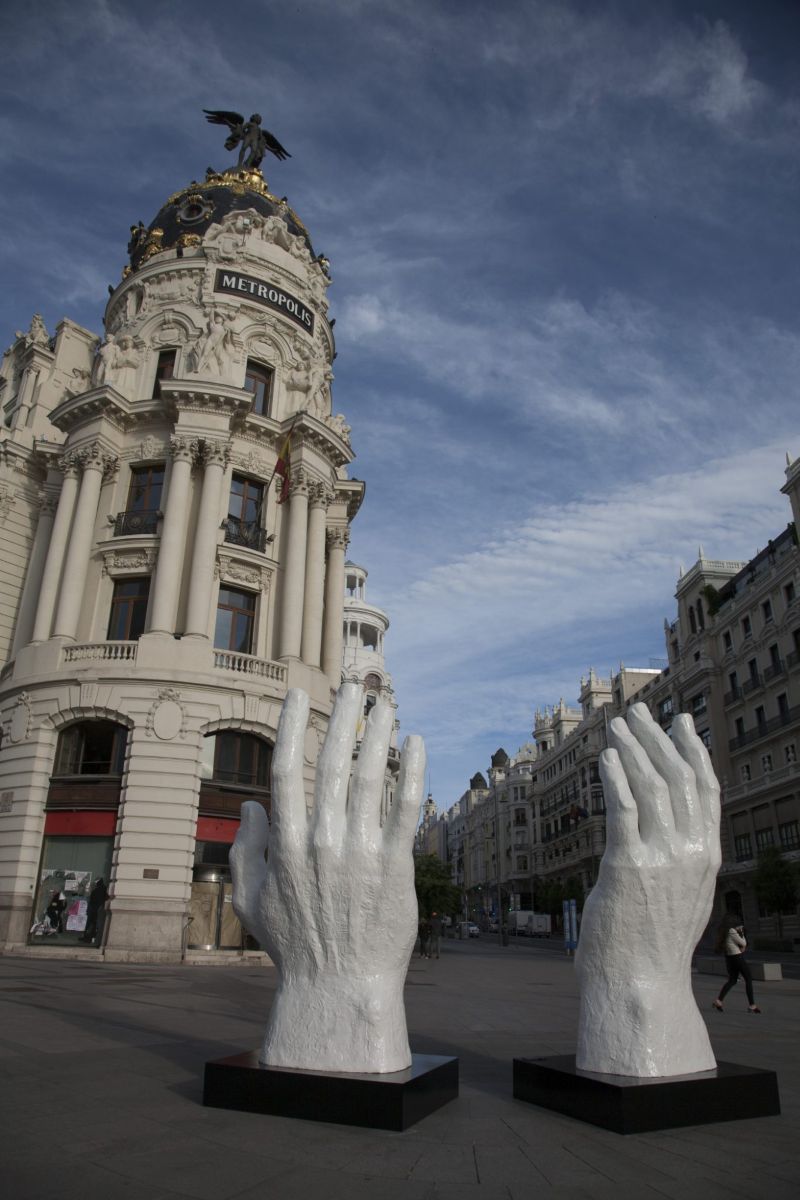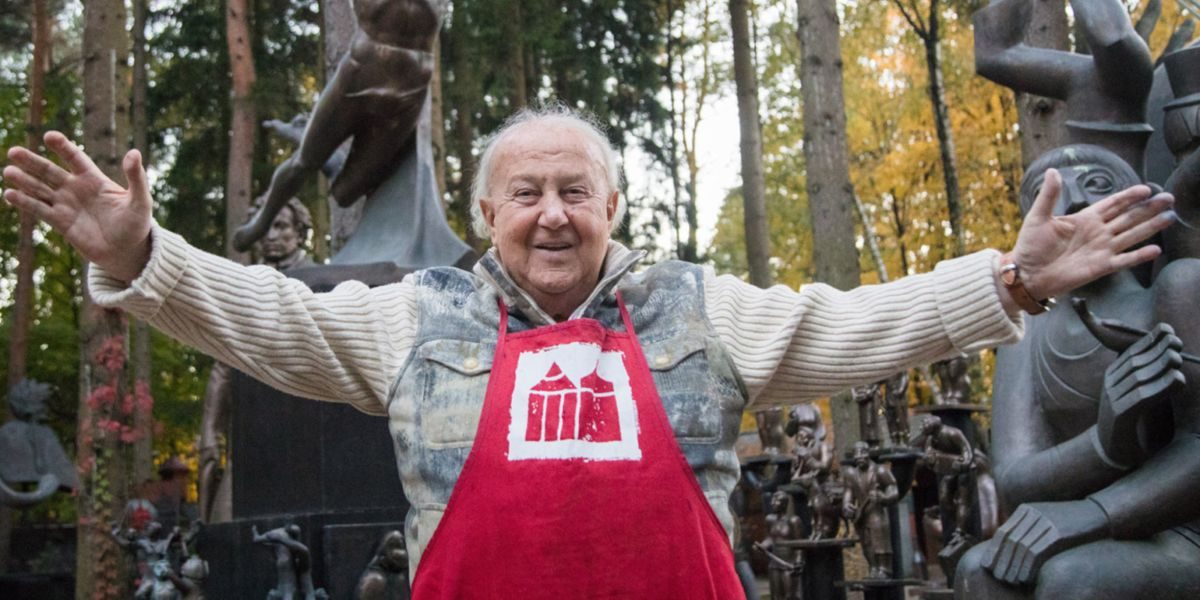It’s always art that raises voices… always art that captures the attention, that celebrates and shapes how we see our cities, our histories, and even ourselves.
But what is the life of an artist like?
Born in 1934 in Tbilisi, Zurab Tsereteli’s life was defined by colour, scale, and emotion. He began painting as a child, encouraged by his uncle, artist Giorgi Nizharadze. The curiosity for creation hence became a lifelong pursuit.
Tsereteli studied at the Tbilisi State Academy of Arts and, after graduating, explored Georgia’s folk traditions, architecture, and stories during research expeditions across the country. These early experiences gave him a deep connection to heritage, the heritage he would incorporate in his artwork for a lifetime.
In a way, Tsereteli was a builder of cities… he was a maker of memories. His monuments weren’t background. They were landmarks. They told stories, started debates, and defined spaces.
Can Sculptures Shape Skylines?
Tsereteli’s body of work is massive, both in size and significance. One of his most recognised pieces is the towering monument “Light and Knowledge to the World (Prometheus)” in Brockport, NYC. It proves its worth and legacy since it’s been a significant part of world sculptures since 1979.
Wherever you go in the world, the artist’s hand is visible, both literally and figuratively.

Sculpture “Hands” at Gran Via, Madrid by Zurab Tsereteli
His “History of Georgia” complex in Tbilisi, which was made in 1981, beautifully captures the rich history and legacy of Georgian culture. The “Four Seasons fountain” on Manezhnaya Square, the high reliefs of the “Cathedral of Christ the Saviour,” and the bold “Statue of Charles de Gaulle” all carry Tsereteli’s signature style: bold, symbolic, unforgettable.
He brought historical figures to life in bronze: Yuri Gagarin, Leo Tolstoy, Nikolai Gogol, and Pope John Paul II, to name a few. Their likenesses now stand in cities like Montevideo, Rome, Paris, and Bari.
The fascinating Adler Resort bathing complex (1973) might actually be our favourite… every single installation is colorful, vibrant, and fully captures the gorgeous waterlife.
Art Beyond Borders
Tsereteli wasn’t confined to only Georgia. His work appears across Europe, the U.S., and Latin America.
- At the UN Headquarters in New York, his sculpture “Good Defeats Evil” reimagines St. George and the Dragon.
- In Bayonne, New Jersey, his “Tear Drop Memorial” honours the victims of 9/11 with a massive steel tear suspended inside a tall bronze tower.
Notable works also include:
- “Break the Wall of Distrust” in London.
- “The Founding Fathers of the European Union” in France.
- “The Birth of a New Man” in Seville.
- “Chronicles of Georgia” in Tbilisi.
His work at the “St. George statue” atop the Freedom Monument in Tbilisi depicts Tsereteli’s incredible talent of mixing public functionality and symbolism.
Monumental Emotion in Paint
While known for sculpture, Tsereteli’s paintings were no less striking. He painted with wide, expressive strokes and intense colour. His canvases were full of life, rooted in myth, folklore, and religious tradition.
Notable artwork includes:
- A Dream. Rtveli (Wine Feast)
- Alik
- At Bagira’s
- At different times
- Autumn
- Avtandil Goes on a Date
And SO many more.
His art is in the Gallery in Rome, in the National Gallery in China,and in Marbella, Spain.

At Different Times by Zurab Tsereteli
These artworks depict the emotional impact of his three-dimensional work. Distorted proportions, dreamlike figures, and bold palettes gave each piece a pulse.
A Legacy Etched in Stone, Quite Literally
Tsereteli never stood still. He studied with Picasso and met Chagall in Paris. He taught in New York, created Olympic art, and worked alongside architect Oscar Niemeyer in Brazil.
It is safe to conclude that every such encounter didn’t just touch him, it shaped his vision. Whichever project he worked on, he made sure to push his boundaries.
In his early career, he brought mosaics, sculpture, and architecture together in seaside resorts and embassies. He didn’t follow the rules. He made new ones.
Tsereteli’s many public pieces often balanced historical meaning with imagination. For Tsereteli, art had to speak, move, and challenge.
Conclusion
Zurab Tsereteli has passed away, but his work lives on. Bold, and immovable. In city centres, parks, and cultural spaces. Across continents.
His art wasn’t meant to be hidden in galleries. It was built for the public. It demands to be seen, touched, and remembered.
Tsereteli has reshaped public space. He lingers on, from Madrid and Tbilisi to New York. More than just monuments, his creations gave people new ways to experience history and emotion in the midst of their cities.
His world was big, but his imagination was bigger.
Published by Jeremy S.

















